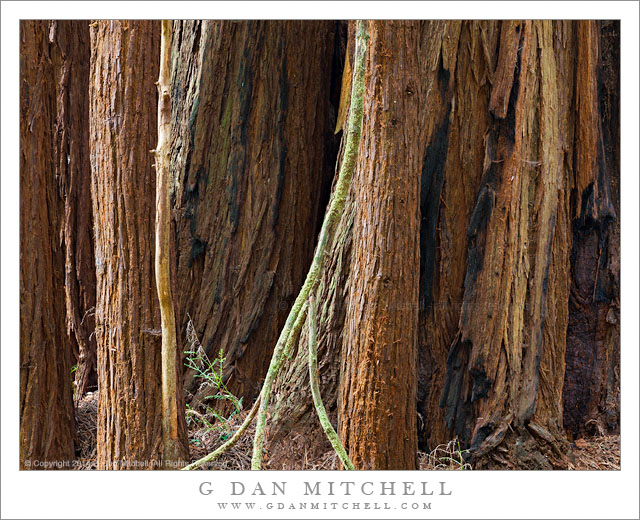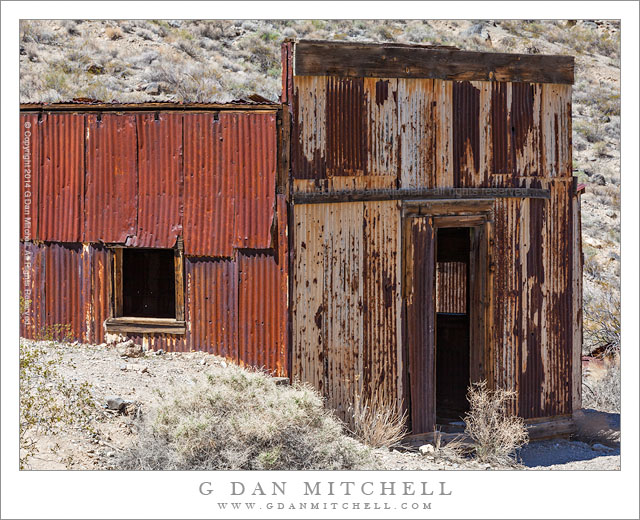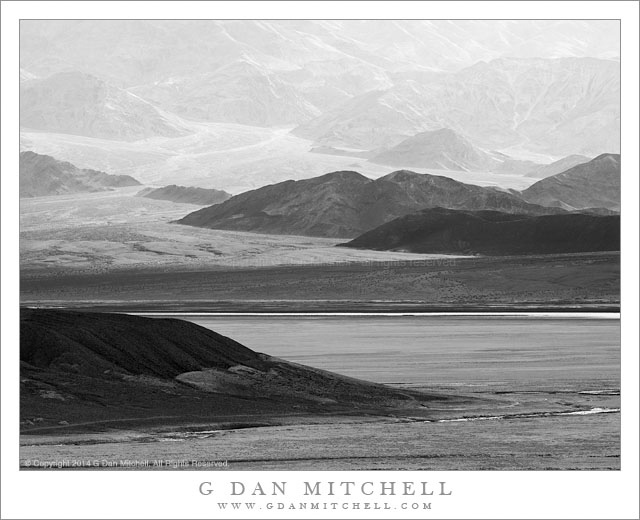
Redwood Forest, Spring. Butano Redwoods State Park, California. June 1, 2014. © Copyright 2014 G Dan Mitchell – all rights reserved.
Dense spring growth and fog-filtered light in the forest at Butano Redwood State Park
I’ll stick with the redwoods theme for a bit longer and share another photograph from my recent first-time photography visit to the Butano Redwoods State Park along the California coast between Santa Cruz and Half Moon Bay. I had not visited this park before, much less photographed it, though I had photographed along the access road that leads to it from the Pacific Coast Highway. It is a pleasure to actually “discover” a new park so close to home!
I chose to visit on this day at least partly because of the promising light. It remained foggy and cloudy along the coast pretty much all day, so I figured that if I went inland a few miles toward the redwoods I might catch the thinning fog and the soft light that it can produce. I found a trailhead, loaded up the camera pack and tripod, and headed out. There was so much to see in this lush forest that I made very slow progress, stopping every couple of minutes to consider and sometimes make another photograph. From this spot along the trail I found a view past closer trees and on into more distant growth, and I stopped to make a few photographs. In this one I chose to work with a vertical composition to emphasize the slender forms of the second-growth redwoods and other trees reaching toward the light.
 G Dan Mitchell is a California photographer and visual opportunist whose subjects include the Pacific coast, redwood forests, central California oak/grasslands, the Sierra Nevada, California deserts, urban landscapes, night photography, and more.
G Dan Mitchell is a California photographer and visual opportunist whose subjects include the Pacific coast, redwood forests, central California oak/grasslands, the Sierra Nevada, California deserts, urban landscapes, night photography, and more.
Blog | About | Flickr | Twitter | Facebook | Google+ | 500px.com | LinkedIn | Email
Text, photographs, and other media are © Copyright G Dan Mitchell (or others when indicated) and are not in the public domain and may not be used on websites, blogs, or in other media without advance permission from G Dan Mitchell.



